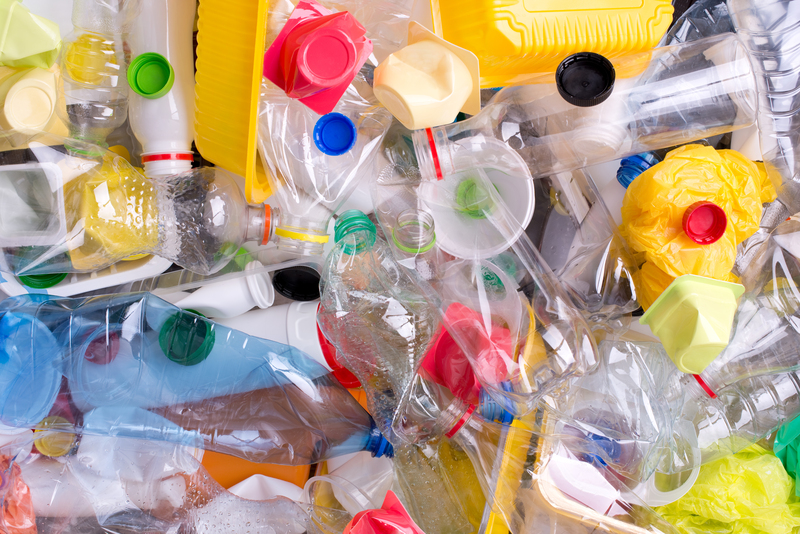Commercial Spaces: Waste Generation Causes
Posted on 24/01/2025
Commercial spaces, comprising office buildings, shopping malls, restaurants, hotels, and other business establishments, are significant contributors to waste generation. As urbanization increases and business activities proliferate, understanding the causes of waste generation in these areas becomes crucial for implementing effective waste management strategies. This article delves into the various factors contributing to waste in commercial spaces.
1. Packaging Waste
Packaging materials represent a substantial portion of the waste produced in commercial environments. Businesses frequently receive goods packaged in materials that are discarded soon after. These materials include:
- Cardboard and Paper: Boxes, wrapping paper, and other paper products used for packaging goods.
- Plastics: Bubble wrap, plastic covers, plastic bags, and other forms of plastic used for protecting and bundling products.
- Styrofoam: Commonly used for cushioning and protecting fragile items.
- Metals and Glass: Used in the packaging of specific products, particularly in food and beverage industries.
Businesses often overuse these materials to ensure the safety and integrity of their products during transportation, leading to an excess amount of waste.

2. Food Waste
Another significant contributor to waste in commercial spaces is food waste, prevalent in restaurants, hotels, and office buildings with onsite cafeterias or canteens. Food waste can be broadly classified into:
- Pre-Consumer Waste: Waste generated during food preparation, including peels, trimmings, and spoiled food.
- Post-Consumer Waste: Waste from leftover food disposed of after consumption by customers or employees.
The hospitality and food service industries are the primary culprits, often due to overestimating demand, leading to excess food that eventually gets discarded.
3. Office Waste
Paper and Stationery
Office spaces generate considerable waste in the form of paper, which includes printed documents, promotional materials, newspapers, and magazines. Despite the growing trend towards digitization, printed materials still play a significant role in business operations. Additional stationery items, such as pens, sticky notes, and envelopes, also contribute to office waste.
Electronic Waste
The rapid pace of technological advancement results in the frequent upgrading of electronic equipment, leading to a significant amount of electronic waste. This includes old computers, printers, phones, and other office gadgets that are discarded when newer models are procured.
4. Hazardous Waste
Commercial spaces, particularly industrial and laboratory environments, generate hazardous waste. This can include:
- Chemical Waste: Generated from cleaning agents, solvents, and other chemicals used in various processes.
- Biomedical Waste: Found in healthcare facilities, including discarded medical supplies, syringes, and pharmaceutical products.
- E-Waste: Electronic waste containing hazardous components like lead, mercury, and cadmium that require careful disposal.
Improper disposal of hazardous waste can have severe environmental and health implications.
5. Construction and Renovation Waste
Commercial spaces often undergo renovations and remodeling, resulting in construction waste. This includes debris from demolished structures, unused construction materials, and packaging waste from new materials. Common items are:
- Concrete, Bricks, and Wood: Materials from demolitions and constructions.
- Metal Scrap: Including pipes, wires, and fixtures.
- Plastic and Glass: Windows, doors, and insulation materials.
Such waste needs proper handling and disposal to minimize its environmental impact.
6. General Waste
General waste comprises everyday items discarded by businesses and employees, including:
- Plastic Bottles and Cans: Beverages consumed by employees and customers.
- Organic Waste: Such as plant trimmings and the remains of perishables.
- Miscellaneous Items: Like old furniture, uniforms, and other equipment that reaches the end of its lifecycle.
While these items may not seem significant individually, collectively, they contribute substantially to the overall waste generated by commercial spaces.
Sustainable Waste Management Practices
Addressing waste generation in commercial spaces involves implementing sustainable waste management practices. This includes:
Reduce and Reuse
Encouraging businesses to adopt practices that reduce waste at the source and promote reusing materials can significantly decrease waste. This might include:
- Choosing suppliers that use minimal or recyclable packaging.
- Implementing double-sided printing policies.
- Encouraging the use of reusable containers, utensils, and water bottles.
Recycling
Setting up recycling programs in commercial spaces for materials such as paper, plastics, glass, and metals can divert significant waste from landfills. Businesses should provide clearly marked recycling bins and educate employees on proper recycling practices.
Composting
For food and organic waste, composting is an effective method of waste management. Businesses, particularly in the food service industry, can set up composting systems to manage organic waste responsibly.

Waste Audits and Monitoring
Conducting regular waste audits helps businesses understand the types and amounts of waste generated, enabling them to develop targeted waste reduction strategies. Continuous monitoring and reporting can further ensure that waste management practices remain effective.
Conclusion
Waste generation in commercial spaces is influenced by various factors, including packaging, food waste, office supplies, hazardous materials, construction debris, and everyday general waste. By understanding these causes, businesses can implement comprehensive waste management strategies that reduce environmental impact and promote sustainability. Through reducing, reusing, recycling, and composting, as well as conducting regular waste audits, commercial spaces can play a pivotal role in addressing the global waste challenge.










